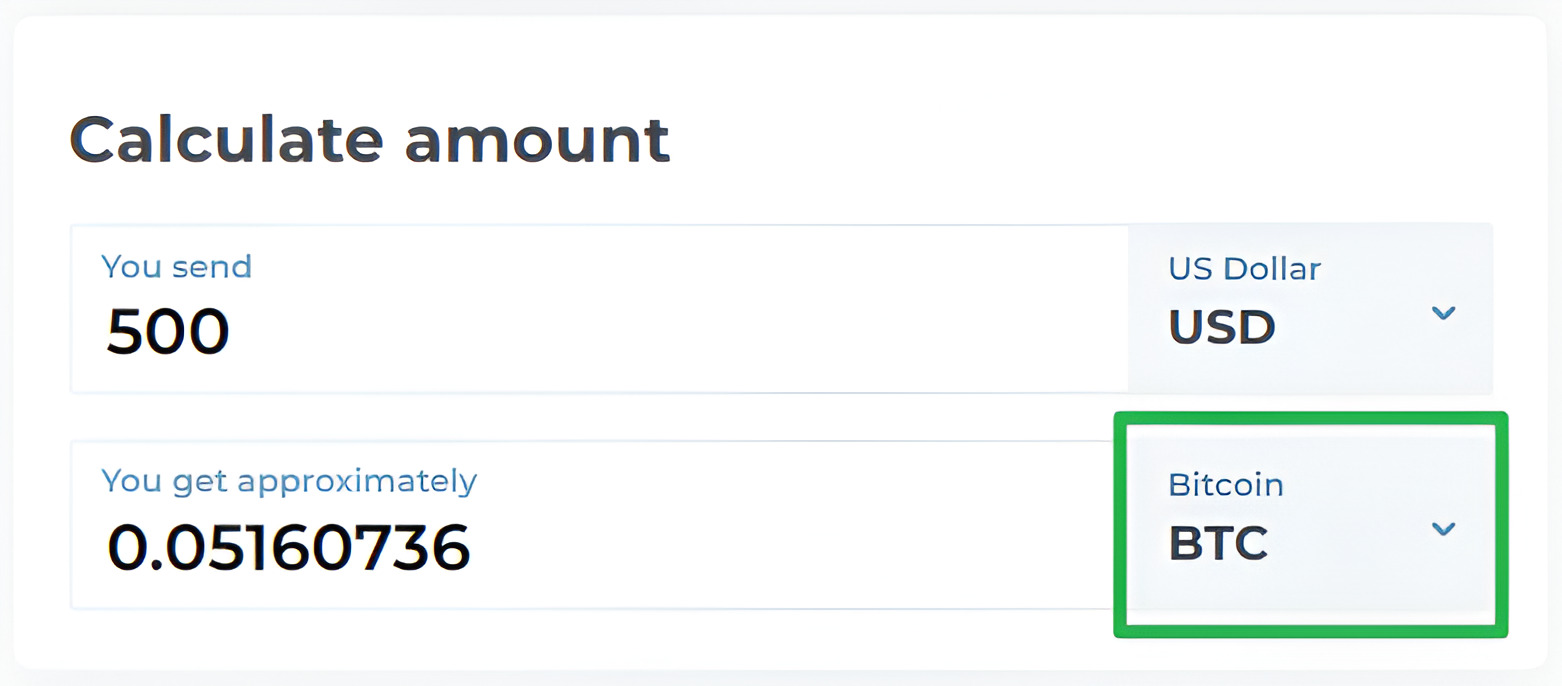Introduction
Bitcoin is a digital currency that has gained significant attention and popularity in recent years. Its value has soared, making it a topic of interest for investors, traders, and everyday individuals. Understanding how the value of Bitcoin is determined is crucial for anyone looking to navigate the world of cryptocurrencies.
The value of Bitcoin, like any other asset, is determined by various factors that influence its market price. While some of these factors are unique to Bitcoin, others are similar to those that impact traditional currencies and assets. In this article, we will explore the key drivers that contribute to the determination of Bitcoin’s value.
One important aspect to note is that Bitcoin operates in a decentralized environment, meaning that it is not controlled by any single entity like a government or financial institution. Instead, it relies on a technology called blockchain, which guarantees transparency and security in transactions.
When analyzing the factors that influence Bitcoin’s value, it’s essential to consider both supply and demand dynamics. Market demand for Bitcoin is driven by various factors, including its perceived store of value, its potential for high returns, and its ability to facilitate online transactions without the need for intermediaries.
On the other hand, the supply of Bitcoin is limited, with a predetermined maximum supply of 21 million coins. This scarcity contributes to its value, as it creates a perception of rarity and exclusivity. The interaction between supply and demand creates a market equilibrium, which determines the price at which Bitcoin trades.
In addition to these fundamental factors, several other elements impact Bitcoin’s value. These include trading volume and liquidity, utility and adoption, market sentiment and news, market manipulation, regulatory environment, comparisons to traditional currencies and assets, and technical factors.
Understanding these factors is critical for investors and traders as they can provide insights into potential price movements and trends. By staying informed and aware of the market dynamics, individuals can make more informed decisions when it comes to buying, selling, or holding Bitcoin.
In the following sections, we will delve deeper into each of these factors, exploring their influence on the value of Bitcoin and providing a comprehensive understanding of the dynamics driving the cryptocurrency market.
Market Demand and Supply
The value of Bitcoin is heavily influenced by the interplay between market demand and supply. Understanding how these factors impact Bitcoin’s value is crucial for investors and traders looking to make informed decisions.
Market demand for Bitcoin is driven by several key factors. One of the primary drivers of demand is the perception that Bitcoin is a store of value, similar to gold. Investors may turn to Bitcoin as a hedge against traditional currencies and inflation, particularly in times of economic uncertainty.
Furthermore, the potential for high returns attracts investors seeking to capitalize on the volatile nature of cryptocurrencies. Bitcoin’s historical price movements have shown significant swings, offering opportunities for traders to profit from price fluctuations.
Another factor contributing to market demand is the growing adoption of Bitcoin as a means of payment. As more businesses and merchants accept Bitcoin as a form of payment, its utility and convenience increase, driving up demand for the cryptocurrency.
On the other side of the equation, the supply of Bitcoin is limited. There will only ever be 21 million bitcoins in existence, a limit set by the cryptocurrency’s creator. This scarcity gives Bitcoin a perception of rarity, similar to precious metals like gold, which can contribute to its value.
The finite supply of Bitcoin is also influenced by the process of mining. Miners use computational power to validate and verify transactions on the blockchain network. As a reward for their efforts, miners are awarded newly created bitcoins, which adds to the circulating supply. However, the rate of new bitcoins being generated decreases over time, leading to a reduction in the supply growth rate.
The interaction between market demand and supply creates a market equilibrium, where buyers and sellers agree on a price at which Bitcoin trades. When demand exceeds supply, the price tends to rise, while an oversupply of Bitcoin relative to demand can lead to price declines.
This supply-demand dynamic is constantly evolving, driven by various factors such as investor sentiment, economic conditions, and regulatory developments. Understanding and staying updated on these factors can provide valuable insights into potential price movements and trends in the cryptocurrency market.
In the next sections, we will explore additional factors that influence the value of Bitcoin, such as trading volume and liquidity, utility and adoption, market sentiment and news, market manipulation, regulatory environment, comparisons to traditional currencies and assets, and technical factors.
Trading Volume and Liquidity
Trading volume and liquidity play a significant role in determining the value of Bitcoin in the cryptocurrency market. These factors reflect the level of activity and accessibility of Bitcoin for buying and selling.
Trading volume refers to the total number of Bitcoin units traded over a specified period, typically measured in terms of Bitcoin or its equivalent value in another currency. Higher trading volumes indicate greater market activity and interest in Bitcoin, leading to increased liquidity.
Liquidity, on the other hand, refers to the ease with which Bitcoin can be bought or sold without causing significant price movements. An asset is considered highly liquid if it can be traded quickly and with minimal impact on its market price.
A high trading volume and liquidity are generally favorable for Bitcoin’s value. It indicates a healthy market where buyers and sellers can transact efficiently, reducing the risk of wide bid-ask spreads and price manipulation.
Increased trading volume also enhances market efficiency and price discovery. When there is a high volume of trades, it becomes easier to determine the accurate market price of Bitcoin as multiple participants contribute to the overall consensus.
Conversely, low trading volume and liquidity can pose challenges for Bitcoin investors and traders. Thin markets with limited trading activity may result in larger bid-ask spreads, making it more difficult to execute trades at desired prices. Additionally, low liquidity can increase the risk of price manipulation by influential market participants.
Bitcoin’s trading volume and liquidity are influenced by various factors, including market sentiment, news events, and the overall interest in cryptocurrencies. Positive news or developments, such as institutional adoption or regulatory advancements, can drive increased trading activity and liquidity.
Exchanges also play a crucial role in determining Bitcoin’s trading volume and liquidity. Popular and reputable exchanges with a large user base tend to have higher trading volumes, offering greater liquidity and tighter spreads.
Traders and investors should pay close attention to trading volume and liquidity when making decisions involving Bitcoin. Higher trading volumes and liquidity generally provide better opportunities for executing trades at desired prices and may indicate a more stable and mature market.
In the following sections, we will explore additional factors that influence the value of Bitcoin, such as utility and adoption, market sentiment and news, market manipulation, regulatory environment, comparisons to traditional currencies and assets, and technical factors.
Utility and Adoption
The utility and adoption of Bitcoin are key factors that can significantly impact its value in the cryptocurrency market. Utility refers to the practical usefulness and functionality of Bitcoin, while adoption refers to its acceptance and integration into mainstream use.
Bitcoin was initially created as a peer-to-peer electronic cash system, aiming to provide a decentralized alternative to traditional fiat currencies. Its utility lies in its ability to facilitate secure, borderless transactions without the need for intermediaries such as banks or payment processors.
As more individuals and businesses recognize the benefits of Bitcoin, its adoption continues to expand. Adoption can manifest in various ways, including merchants accepting Bitcoin as payment, individuals using Bitcoin for remittance purposes, and institutional investors including Bitcoin in their investment portfolios.
Increased adoption of Bitcoin can positively influence its value in several ways. Firstly, broader acceptance and use of Bitcoin increase its utility, making it more attractive to potential users and investors. As its usability expands, the demand for Bitcoin may increase, potentially driving up its value.
Moreover, adoption by major companies or institutions can provide a sense of legitimacy and trust in Bitcoin. This can foster confidence among potential investors and further fuel demand for the cryptocurrency.
The utility and adoption of Bitcoin are also intertwined with technological advancements and innovation. As the technology supporting Bitcoin evolves, such as the development of the Lightning Network for faster and cheaper transactions, it enhances the practical applications and scalability of Bitcoin, further boosting its utility and adoption prospects.
However, challenges remain in terms of widespread adoption. Bitcoin’s volatility, regulatory uncertainties, and technical complexities can deter some individuals and businesses from fully embracing it. Additionally, scalability issues and transaction fees during peak periods can hinder the practicality of using Bitcoin for everyday transactions.
Nonetheless, the utility and adoption of Bitcoin continue to progress, with more industries and sectors exploring its use cases. From e-commerce platforms to remittance services, the integration of Bitcoin into various industries showcases its potential as a disruptor in the financial landscape.
Traders and investors should monitor the level of utility and adoption of Bitcoin as it can impact its value and long-term prospects in the cryptocurrency market. Increased adoption and practical applications of Bitcoin can contribute to a positive market sentiment and potentially drive its value upwards.
In the following sections, we will explore additional factors that influence the value of Bitcoin, such as market sentiment and news, market manipulation, regulatory environment, comparisons to traditional currencies and assets, technical factors, and more.
Market Sentiment and News
Market sentiment and news have a significant impact on the value of Bitcoin in the cryptocurrency market. The perception and emotions surrounding Bitcoin, as well as the information disseminated through news channels, can influence investor behavior and subsequently impact its price.
Market sentiment refers to the overall attitude and feeling of investors towards Bitcoin. Positive sentiment is usually associated with optimism and a belief that the cryptocurrency will increase in value, while negative sentiment reflects pessimism and a belief that the price will decline.
Market sentiment can be influenced by a variety of factors, including economic conditions, geopolitical events, regulatory changes, and public opinion. For instance, positive news about the adoption of Bitcoin by a major company can generate optimism and drive up demand, leading to a rise in Bitcoin’s value.
News plays a critical role in shaping market sentiment. The release of news articles, social media discussions, and expert opinions can impact how investors perceive Bitcoin and its future prospects. Positive news coverage often encourages more people to invest in Bitcoin, driving up demand and potentially increasing its value.
Conversely, negative news or events can lead to a decline in market sentiment and a decrease in Bitcoin’s value. For example, reports about regulatory crackdowns or security breaches can erode trust and confidence in Bitcoin, leading to a decrease in demand.
The speed at which news spreads in today’s digital age can also contribute to price volatility. Breaking news or significant developments can cause rapid and significant price movements as investors react to the new information. Traders and investors must stay informed about the latest news and developments to make timely and well-informed decisions.
It is important to note that market sentiment and news are not always reliable indicators of long-term value. Sentiment can be influenced by temporary factors and emotions, which may not accurately reflect Bitcoin’s inherent value or its long-term potential.
It is essential to analyze and evaluate news and sentiment with a critical mindset. Care should be taken to differentiate between sensationalism and credible information. Traders and investors should rely on a combination of reliable news sources, expert analysis, and their own research to form a well-rounded understanding of market sentiment.
By closely monitoring market sentiment and staying updated on the latest news and developments, traders and investors can have a better sense of the current market environment and make more informed decisions regarding Bitcoin.
In the following sections, we will explore additional factors that influence the value of Bitcoin, such as market manipulation, regulatory environment, comparisons to traditional currencies and assets, technical factors, and more.
Market Manipulation
Market manipulation is an important factor that can affect the value of Bitcoin in the cryptocurrency market. It refers to the intentional actions of individuals or groups to artificially influence the price of an asset, including Bitcoin, for their own financial gains.
Market manipulation can take various forms, such as pump and dump schemes, spoofing, and wash trading. These manipulative practices can distort the supply and demand dynamics of Bitcoin, leading to sudden price spikes or crashes that are not driven by genuine market forces.
A pump and dump scheme involves artificially inflating the price of Bitcoin by spreading positive news, creating hype, and attracting unsuspecting investors to buy at inflated prices. Once the price reaches a certain point, the manipulators sell their holdings, causing a rapid price decline and leaving latecomers at a loss.
Spoofing is a practice in which traders place large orders to create an illusion of significant demand or supply. They then cancel these orders once the market reacts to manipulate prices in their favor. This technique can trick other market participants into making trades based on false information.
Wash trading is another form of market manipulation where traders buy and sell Bitcoin to themselves, creating artificial trading volume and misleading others about the actual level of market activity. This practice can give a false impression of liquidity and can be used to create the illusion of a thriving market.
Market manipulation is an illegal activity in regulated markets, but the cryptocurrency market is still relatively unregulated, making it susceptible to such practices. The lack of oversight and transparency in the cryptocurrency space makes it more challenging to detect and prevent manipulation.
It is crucial for traders and investors to be aware of the potential risks of market manipulation. Learning to recognize patterns and suspicious price movements can help avoid falling victim to manipulative schemes. Additionally, staying updated on regulatory developments and supporting initiatives to increase market transparency can contribute to a more secure and trustworthy cryptocurrency market.
The acknowledgment and regulation of market manipulation in cryptocurrencies will be essential for the broader adoption and stability of these digital assets. As the market matures and regulatory frameworks continue to develop, it is expected that measures to combat market manipulation will be strengthened, enhancing the overall integrity of the cryptocurrency market.
In the following sections, we will explore additional factors that influence the value of Bitcoin, such as the regulatory environment, comparisons to traditional currencies and assets, technical factors, and more.
Regulatory Environment
The regulatory environment surrounding Bitcoin is a crucial factor that can impact its value in the cryptocurrency market. Regulations determine how Bitcoin can be used, traded, and regulated by governments and financial institutions, and they can have a significant influence on market sentiment and the overall adoption of Bitcoin.
The regulatory landscape for Bitcoin varies across different jurisdictions. Some countries have embraced cryptocurrencies and set up clear regulatory frameworks to govern their use, while others have taken a more cautious or strict approach. The level of regulatory clarity and certainty can significantly affect the market for Bitcoin.
Positive regulatory developments can lend legitimacy and stability to the cryptocurrency market, potentially increasing investor confidence and driving up demand for Bitcoin. For example, regulatory measures that protect consumers against fraud and ensure the compliance of cryptocurrency exchanges can foster trust and encourage more individuals and institutions to enter the market.
On the other hand, strict or unfavorable regulations can have adverse effects on Bitcoin’s value. Overly restrictive regulations can limit the ability of individuals and businesses to use Bitcoin, reducing its utility and potential market demand. Additionally, regulatory crackdowns can create uncertainty and negative sentiment, leading to a decline in Bitcoin’s value.
Regulations can also have an impact on market liquidity. Some regulatory measures, such as Know Your Customer (KYC) and Anti-Money Laundering (AML) requirements, may impose additional compliance burdens on cryptocurrency exchanges and users. These requirements can affect the ease with which Bitcoin can be bought and sold, potentially influencing its trading volume and liquidity.
It is noteworthy that the regulatory environment for Bitcoin and other cryptocurrencies is still evolving. Governments and financial regulators around the world are continuously developing and refining their approach to these digital assets.
Traders and investors in Bitcoin should closely monitor regulatory developments in their respective jurisdictions, as well as in major global markets. Awareness of regulatory changes can help anticipate potential impacts on Bitcoin’s value and adjust investment strategies accordingly.
The establishment of clear and favorable regulatory frameworks can contribute to the long-term stability and growth of the cryptocurrency market. As governments and financial institutions continue to explore and engage with cryptocurrencies, it is expected that regulatory clarity will increase, providing a more secure environment for Bitcoin and other cryptocurrencies to thrive.
In the following sections, we will explore additional factors that influence the value of Bitcoin, such as comparisons to traditional currencies and assets, technical factors, and more.
Comparisons to Traditional Currencies and Assets
Comparing Bitcoin to traditional currencies and assets is essential in understanding its value and position in the financial landscape. Bitcoin’s unique characteristics and capabilities distinguish it from traditional forms of money and investments, which can influence its perceived value.
One key comparison is between Bitcoin and fiat currencies, such as the US Dollar, Euro, or Japanese Yen. Unlike fiat currencies, which are issued and regulated by central banks and governments, Bitcoin operates on a decentralized network called blockchain. This decentralization means that Bitcoin is not subject to government control or monetary policies, leading some proponents to view it as a hedge against traditional currencies.
Bitcoin’s limited supply, with a maximum of 21 million coins, sets it apart from the unlimited ability of central banks to create fiat currency. This scarcity can contribute to its value, as it implies a potential store of value and resistance to inflation.
Additionally, Bitcoin’s borderless nature and its potential for seamless cross-border transactions differentiate it from traditional currencies, which often involve intermediaries and high transaction costs. Bitcoin’s use cases for remittances and international transfers have attracted attention as an alternative to traditional banking solutions.
Comparing Bitcoin to traditional assets, such as stocks, bonds, or commodities, reveals its unique characteristics and potential diversification benefits. Bitcoin’s price movements have shown a relatively low correlation with traditional assets, leading some investors to consider it as part of their portfolio diversification strategy.
Bitcoin’s perceived value as a speculative investment and its potential for high returns attract a different investor base compared to traditional assets. The volatility and price swings associated with Bitcoin can offer opportunities for traders seeking short-term gains, but it also presents risks for those seeking stable, long-term investments.
Another factor to consider in the comparison is the market size and liquidity of Bitcoin versus traditional currencies and assets. Bitcoin’s market capitalization, while significant in comparison to many individual stocks, remains relatively small compared to global stock markets or the total value of fiat currencies in circulation. This difference in market size can contribute to higher volatility and liquidity challenges in the cryptocurrency market.
It is important to note that comparing Bitcoin to traditional currencies and assets is complex, as it involves evaluating different frameworks and value propositions. Bitcoin’s disruptive potential and innovative nature can create distinct advantages and challenges compared to more established forms of money and investments.
Traders and investors should carefully consider their individual risk tolerance, investment objectives, and time horizon when assessing the role of Bitcoin in their portfolio. Recognizing the unique characteristics of Bitcoin compared to traditional currencies and assets can help inform investment decisions and manage expectations.
In the following sections, we will explore additional factors that influence the value of Bitcoin, such as technical factors, market sentiment and news, market manipulation, regulatory environment, and more.
Technical Factors
Technical factors play a significant role in determining the value of Bitcoin in the cryptocurrency market. These factors include elements related to the underlying technology, market structure, and analysis techniques used by traders and investors.
One key technical factor is the mining process. Bitcoin is created through a process called mining, where powerful computers compete to solve complex mathematical problems. The mining difficulty adjusts automatically to ensure that new blocks are added to the blockchain at a consistent rate. The mining process not only confirms transactions but also adds new bitcoins to circulation. The reward halving events that occur approximately every four years impact the rate of new bitcoin creation, potentially affecting the supply and, consequently, the value of Bitcoin.
Market structure and liquidity also play into technical factors. The depth of the market and the availability of buy and sell orders at various price levels can impact price movements and overall market stability. Highly liquid markets with ample trading volume tend to have tighter bid-ask spreads and can absorb larger orders without significant price slippage.
Technical analysis is another important aspect of evaluating Bitcoin’s value. Traders and investors often use chart patterns, indicators, and statistical models to analyze past price movements and identify potential trends or trading opportunities. Common technical analysis tools include moving averages, relative strength index (RSI), and Fibonacci retracement levels. These analysis techniques can provide insights into potential support and resistance levels, trend reversals, and market sentiment.
In addition to technical analysis, fundamental analysis also contributes to understanding Bitcoin’s value. Fundamental factors include considerations such as market demand and supply, utility and adoption, regulatory developments, and macroeconomic factors. Fundamental analysis aims to determine the intrinsic value of an asset based on its underlying characteristics and the broader economic context.
Another technical factor that can impact Bitcoin’s value is the level of network security and vulnerabilities. As a decentralized network, Bitcoin relies on the security provided by its blockchain technology. Any identified vulnerabilities or successful hacking attempts can potentially erode confidence in Bitcoin, leading to a decline in its value. Conversely, improvements in network security and technological advancements can enhance Bitcoin’s value proposition.
Lastly, software upgrades and protocol improvements also fall under technical factors. Bitcoin’s open-source nature allows developers to propose and implement updates to improve its functionality, scalability, and privacy features. Software upgrades, such as the implementation of Segregated Witness (SegWit) or the Lightning Network, can impact transaction speed, cost, and the overall user experience. The successful adoption and integration of these upgrades can positively influence Bitcoin’s value and utility.
Understanding and keeping track of technical factors can provide valuable insights for traders and investors in the cryptocurrency market. By monitoring mining-related events, analyzing market structure and liquidity, conducting technical and fundamental analysis, assessing network security, and staying informed about software improvements, individuals can make more informed decisions regarding Bitcoin.
In the following sections, we will explore additional factors that influence the value of Bitcoin, such as market sentiment and news, market manipulation, regulatory environment, comparisons to traditional currencies and assets, and more.
Conclusion
Bitcoin’s value is influenced by a multitude of factors that impact its market dynamics. Understanding these factors is crucial for traders and investors looking to navigate the cryptocurrency market effectively.
Market demand and supply, trading volume and liquidity, utility and adoption, market sentiment and news, market manipulation, regulatory environment, comparisons to traditional currencies and assets, and technical factors all have a significant impact on Bitcoin’s value.
Market demand and supply reflect the balance between buyers and sellers in the market, with factors like perceived store of value, potential for high returns, and utility driving demand for Bitcoin. Bitcoin’s limited supply adds to its value perception due to its scarcity.
Trading volume and liquidity influence market efficiency and price discovery. Higher trading volumes and greater liquidity generally provide better opportunities for executing trades and determining accurate market prices.
The utility and adoption of Bitcoin are essential factors that attract users and investors, as they highlight its practical applications and wider acceptance. The level of adoption and the integration of Bitcoin into various industries can influence its value and market sentiment.
Market sentiment and the impact of news play a significant role in shaping Bitcoin’s value. Positive news, developments, and overall optimistic sentiments can drive up demand and increase Bitcoin’s value, while negative news and sentiments can lead to declines.
Market manipulation poses risks and challenges in the cryptocurrency market. Being aware of manipulative practices and monitoring regulatory developments can help traders and investors mitigate potential risks associated with market manipulation.
The regulatory environment surrounding Bitcoin is continuously evolving and can heavily influence its value. Positive regulatory frameworks and clarity can contribute to a more secure and trustworthy cryptocurrency market, while strict or unfavorable regulations may hinder adoption and affect Bitcoin’s value.
Comparisons to traditional currencies and assets highlight Bitcoin’s unique characteristics and potential diversification benefits. Understanding these comparisons can provide insights into Bitcoin’s role in a portfolio and its potential correlations with traditional financial markets.
Technical factors, such as mining processes, market structure, technical analysis, network security, software upgrades, and protocol improvements, are key elements that impact Bitcoin’s value. Monitoring and analyzing these factors can provide valuable insights for informed decision-making.
Overall, the value of Bitcoin is a complex interplay of various factors that influence its market dynamics. Staying informed, conducting thorough research, and understanding the nuanced relationship between these factors can help traders and investors navigate the cryptocurrency market more effectively.

























